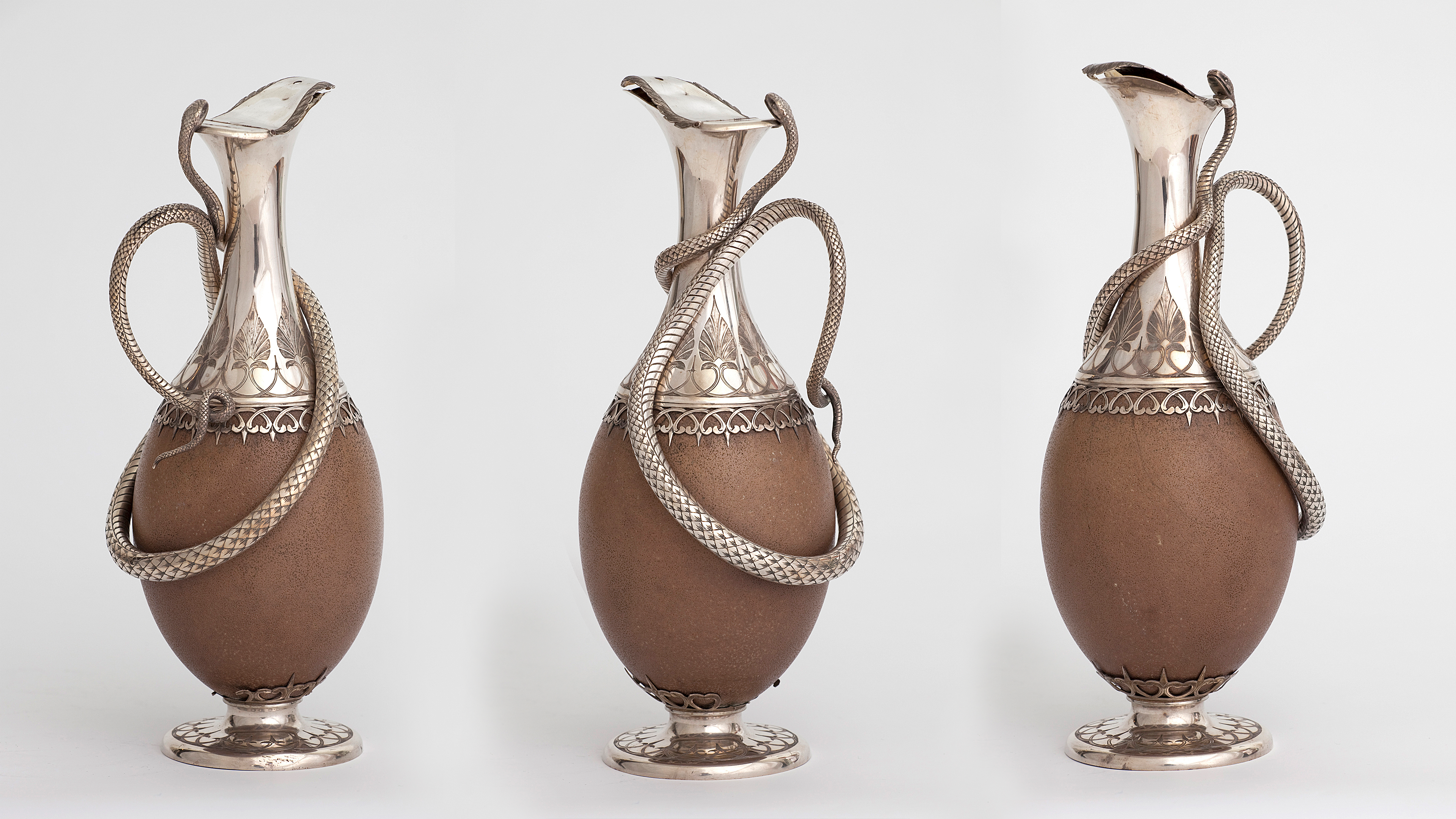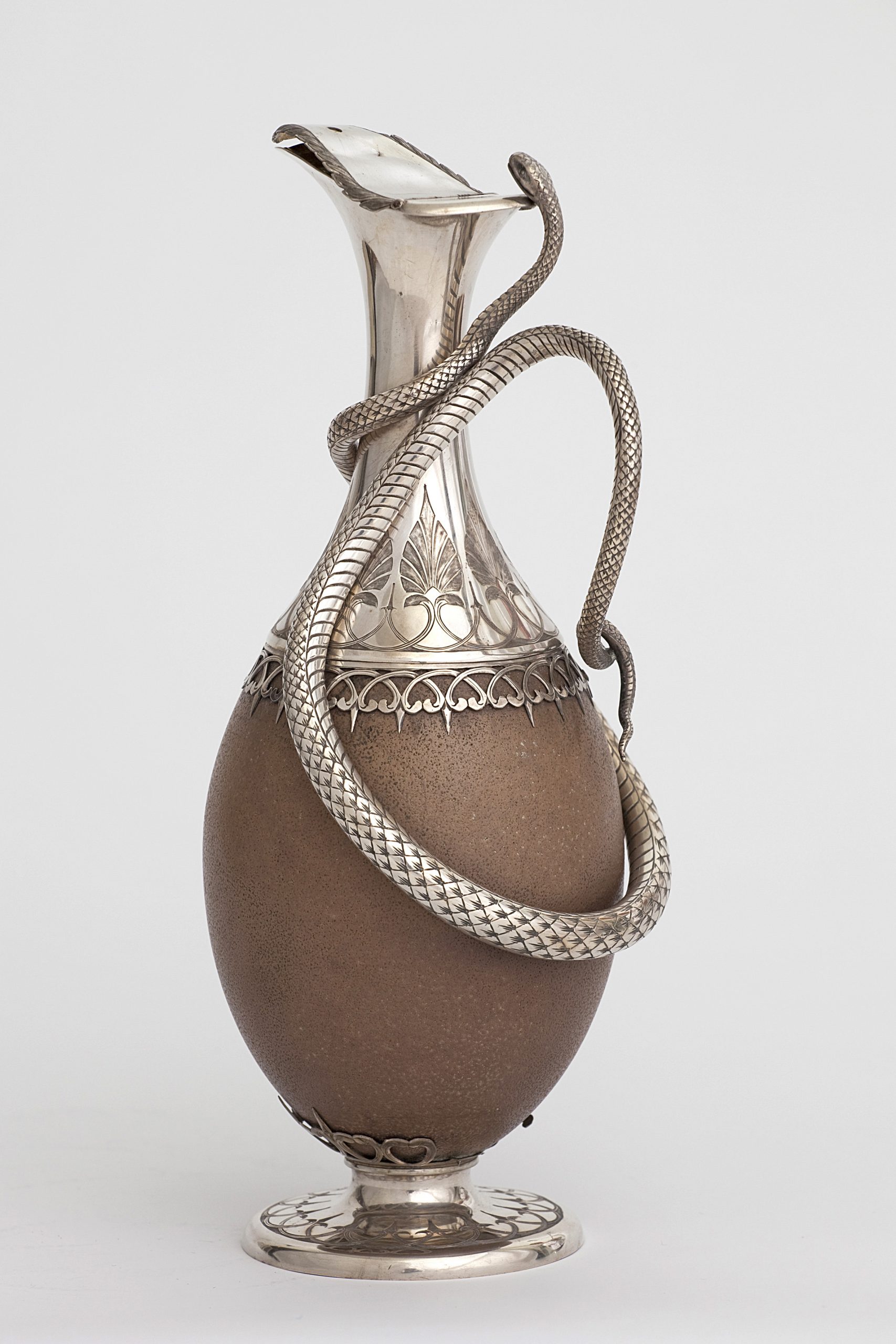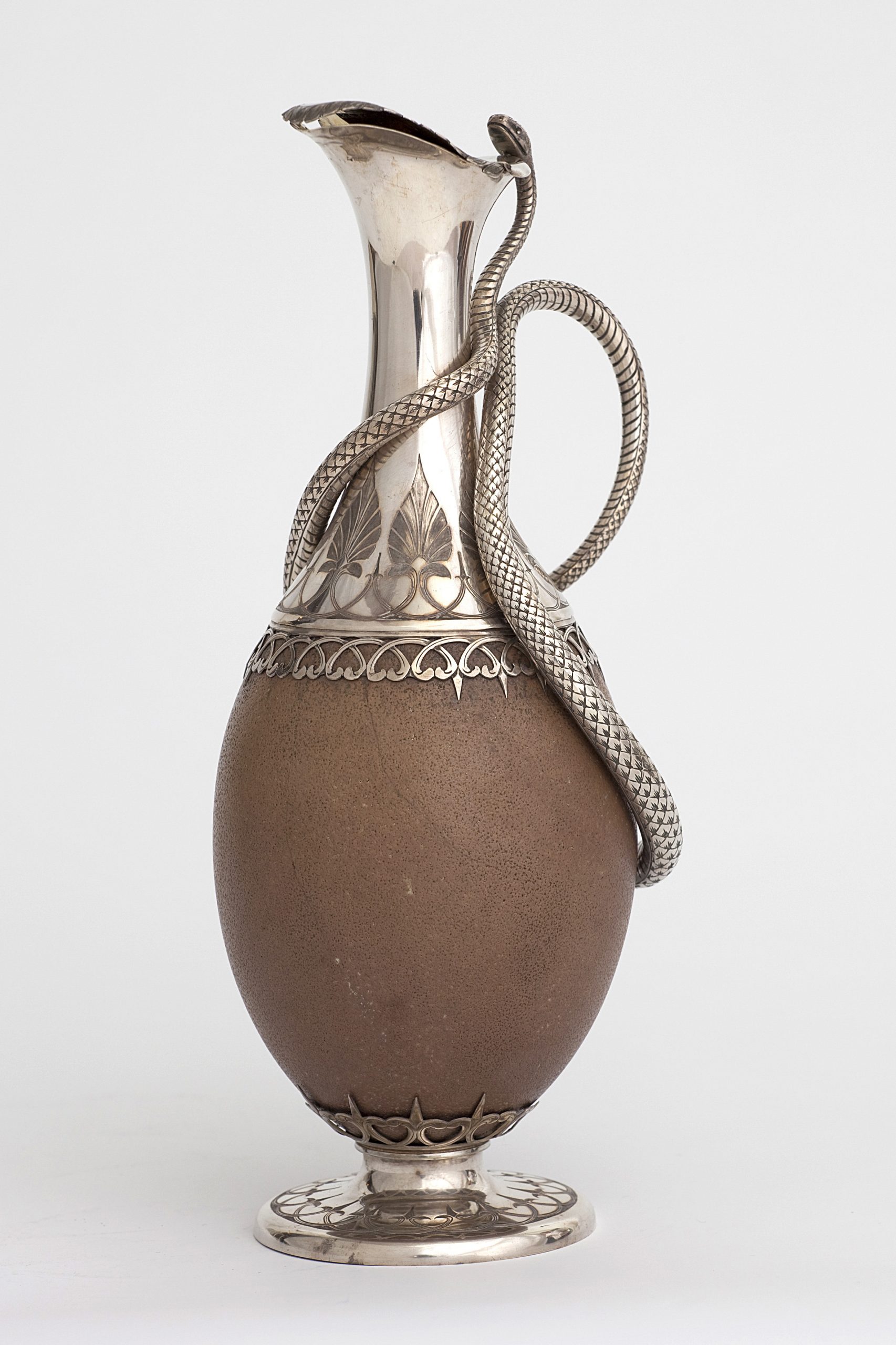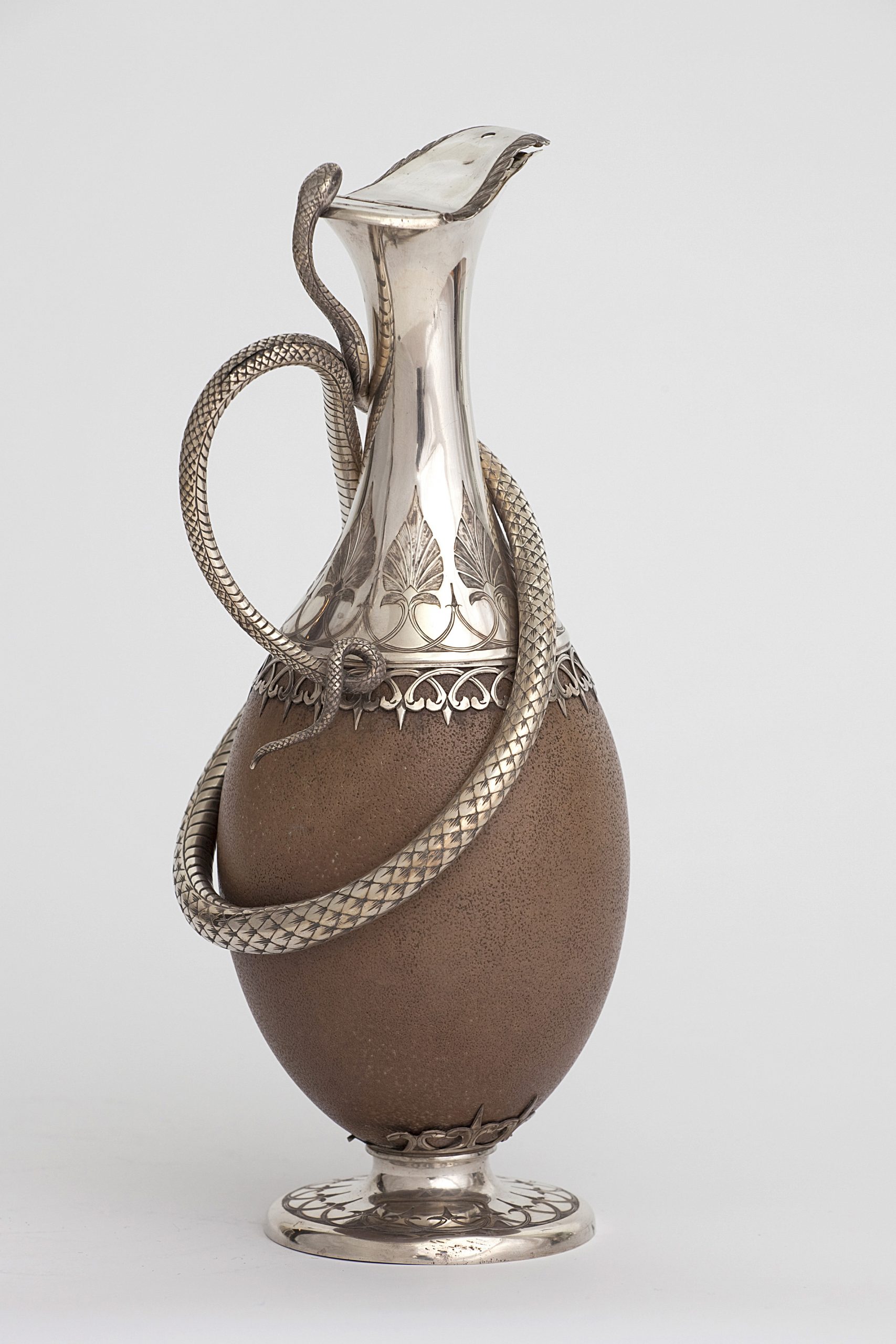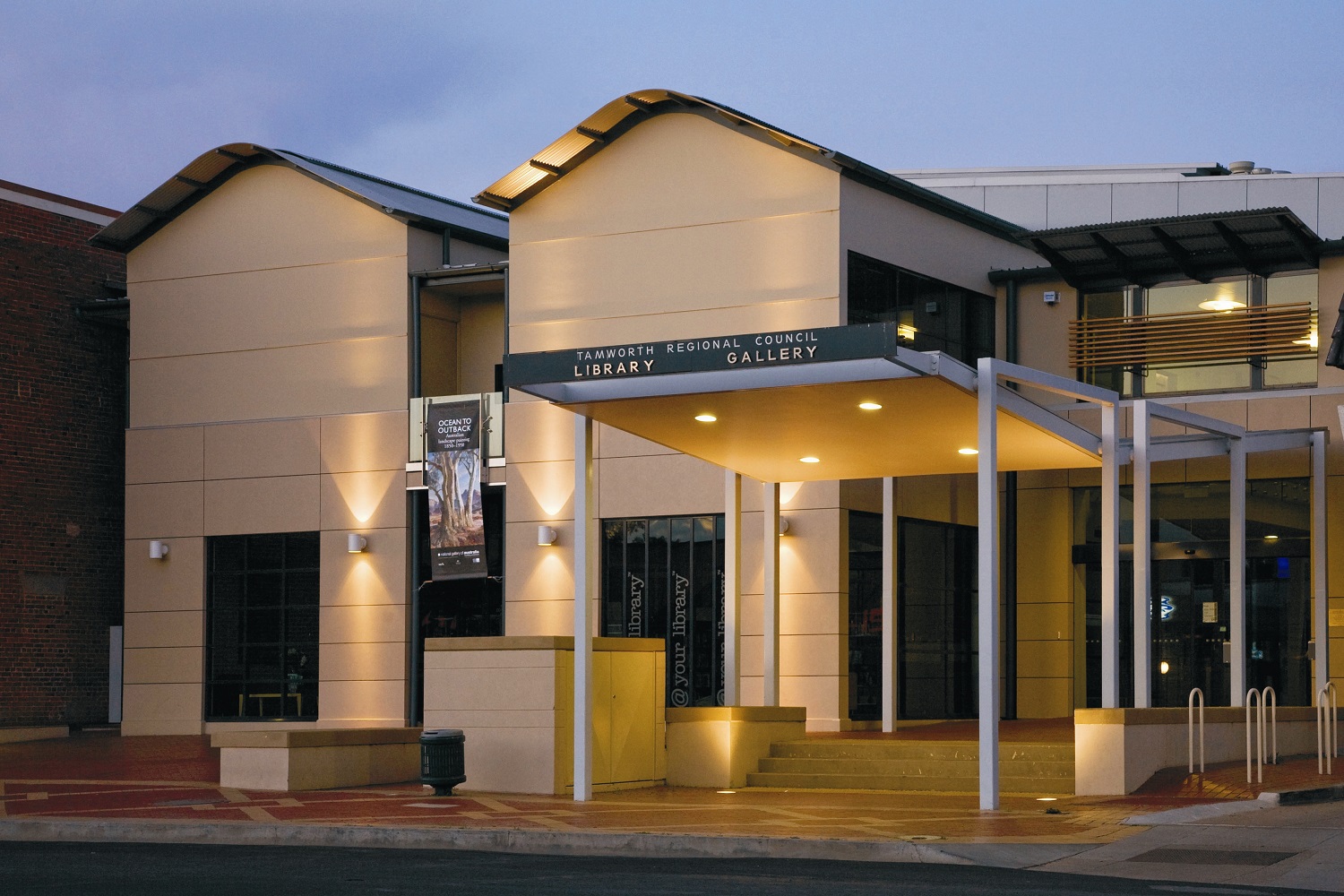Snake Handling
A Striking Claret Jug
The sinuous silver snake that forms the handle of this claret ewer is poised to strike – but at what? The snake is focussed on the hinged lid of the ewer, which has a hole where perhaps a knob was once attached. Could the missing knob be the snake’s prey, and could it have been in the form of a bird?
If so, perhaps this ewer is the one mentioned in the Sydney Morning Herald on 19 July 1866 as a claret jug and two chalices made of emu eggs and burnished silver scrollwork. The handle of the jug is described as ‘formed by the sweeping folds of a serpent of oxidised silver’ and its tapering neck as ‘being of burnished silver, with a cover on which there is a spirited representation of a well-known Australian bird, ‘the Settlers Clock’.’
The ‘Settlers Clock’ was a name given to the kookaburra, renowned for its habit of heralding dusk and dawn with its raucous laughter. Christian Ludwig Qwist, the Danish silversmith who made this jug, created a number of presentation and ceremonial items out of emu eggs mounted in silver. Coiled snakes and kookaburras were a feature of many of them, in keeping with the fashion for display items that celebrated Australia’s native flora and fauna in the second half of the nineteenth century.


